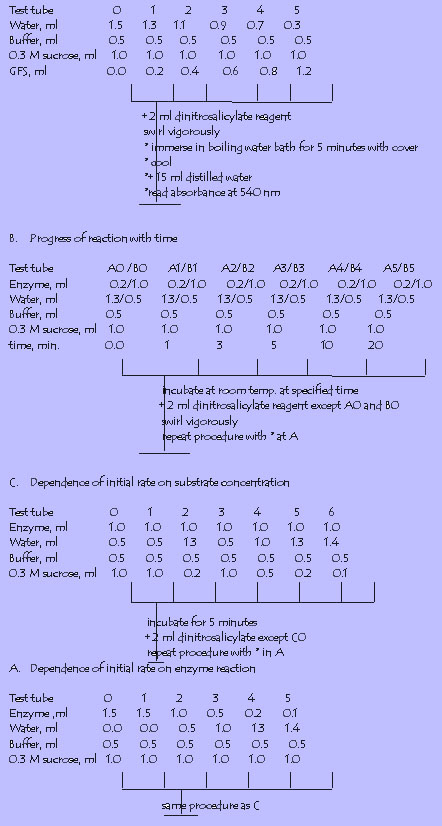
EXPERIMENT NO. 6
ENZYME KINETICS
Introduction
Enzymes are called biocatalysts. They accelerate the reactions in living organisms by providing an alternative pathway with lower activation energy which is the minimum energy required to reach the transition state (i.e., the particular arrangement of reactant and product molecules at the point of maximum energy in the rate-determining step in a reaction). All enzymes are proteins except for a small group of catalytic RNA molecules. Enzyme kinetic studies is useful in deducing reaction mechanisms in reaction catalyzed by enzymes.
Invertase catalyzes the hydrolysis of sucrose to glucose and fructose. The method employed in the experiment to monitor the progress of reaction of invertase-catalyzed reactions is the monitoring the production of reducing sugars in the mixture. The substrate is sucrose which is a non-reducing sugar. The products of hydrolysis are both reducing sugars. Reducing sugars react with 3,5-dinitrosalicylate reagent to produce a yellow chromophore which absorbs strongly at 540 nm. Absorbance measurements will provide the information for reducing sugar content.
Temperature affects the reactions of enzymes greatly. A temperature increase
will result in an increase in reaction rate due to an increase in effective
collisions. Most enzymes act rapidly at 35degrees C and 55degrees C and
are inactivated if the temperature is raised to 70degrees C because they
denature at this point. Another factor affecting enzyme reactions is pH.
The optimum pH for most enzymes lie between 5
and 9 and they are inactivated by particular
conditions of acidity and alkalinity.
The Michaelis-Menten equation expresses the relation between the velocity and substrate concentration as well as the maximum velocity (Vmax) and Michaelis-Menten constant KM which is a combination of rate constants. The equation is: 1/v = (KM/Vmax)(1/[S]) + 1/Vmax
Activators enhance the rates of enzyme-catalyzed reactions. When inhibitors
are added the rates are reduced. Finally, cofactors, which are the nonprotein
components of an enzyme, are needed for catalysis. These reagents effect
changes in the activities of enzymes.
Procedure
A. Calibration curve for reducing sugar content

Note: Use tube 0 as blank.
Links :
Back to Main Page
Chemistry 145.1
Human Genome Project and
Bioinformatics
Experiment No. 1
Experiment No. 2
Experiment No. 3
Experiment No. 4
Experiment No. 5
Experiment No. 6
Experiment No. 7
Experiment No. 8
Experiment No. 9
Experiment No.
10
Experiment No.
11
Experiment No.
12
References